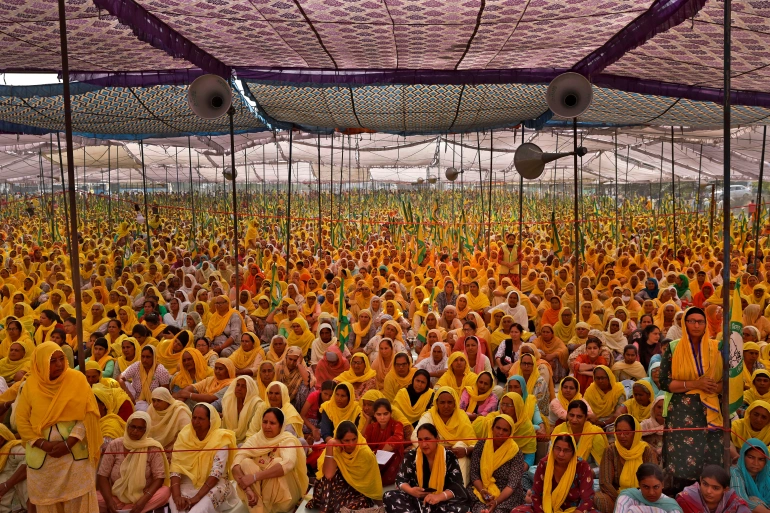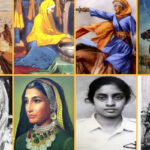Women’s involvement in the farmers’ agitation gave the movement a special dimension. Statistics indicate that women have been actively taking part in the protest and have come to represent it symbolically. The uproar highlighted the female agricultural force’s invisibility. According to numerous research on agrarian transformation in Punjab, women farmers were marginalized as a result of the green revolution, turning agriculture in Punjab entirely into a male domain. The fall of the agrarian dream has primarily affected Punjabi women. As their men’s prosperous world fell apart in front of them, it was the women who were forced to pay the price. The steady deterioration of the Jat Sikh identity and their negotiating strength can be seen in the declining returns from agriculture, which have been mirrored in this decimation. The function of the male or masculine self, which has been reduced, is reversed as a result of the widespread trends of farmer suicides, drug addiction, and the economics of loss. These ladies had to pick up the pieces and fight for their children’s futures, inspiring their husbands to do the same. Because of their zeal, they have taken the lead in the agitation. According to Rupinder Kaur, national secretary of the National Federation of Indian Women, which is associated with the CPI and has a chapter in Tarn Taran, Punjab Istri Sabha, “There was a strong sense of hopelessness among women from spousal abuse to unemployment to living debt-ridden lifestyles. The epidemic brought everything to a head, and the farmers’ movement provided them a way to express their rage and take the initiative. The women’s cell coordinator at BKU-Ugrahan, Harinder Bindu, 41, had the following response: “If something happens in the family, a female is the first victim. She is the one who is pressured into making sacrifices like selling jewels to pay off debts or reducing her kitchen budget. Even landowners make men first mortgage their wives, jewellery, or other household items. Women were greatly motivated to join this protest by their realization that the farm bill will provide financial difficulties and threaten the future of the entire family. The women’s cell coordinator at BKU-Ugrahan, Harinder Bindu, 41, had the following response: “If something happens in the family, a female is the first victim. She is the one who is pressured into making sacrifices like selling jewels to pay off debts or reducing her kitchen budget. Even landowners make men first mortgage their wives, jewellery, or other household items. Women were greatly motivated to join this protest by their realisation that the farm bill will provide financial difficulties and threaten the future of the entire family. Fighting for the protection of the land is the main tenet of the entire peasant movement.
The land is always connected with men in a patriarchal society like ours. However, when women claim that this protest is also a fight for their existence, they are also attempting to assert their rightful place in this society. I believe that this is the protest’s most striking beauty and that it will eventually change the deeply ingrained gender prejudices in our society. According to OXFAM surveys, women make up “almost 75% of the full-time employees on Indian farms,” generating “60% to 80%” of the country’s food. (The Print, March 13, 2021) According to estimates, “women farmers in India work roughly 3,300 hours over a typical agricultural season when fields are sowed and harvested, double the 1,860 hours their male colleagues put into farming.” Sadly, this work is largely unnoticed, underappreciated, and unrecognised. Only 12.8% of the land in India is owned by Indian women, according to a subsequent Oxfam survey. On family farms owned by their parents, husbands, or in-laws, one-third of Indian women farmers work unpaid. Although women put in more effort than male farmers in the majority of farming-related tasks, according to activist Harinder Kaur, “women fall behind in obtaining recognition as farmers and many a time fail to get any benefits as fundamentally they are not portrayed as farmers in the official documentation. The role of women farmers must be affirmed, and they must step forward to claim the benefits designated for farmers.
This pattern of marginalization continues “for generation after generation, [women] never owning the land they work or even their own homes,” as a result of the discriminatory inheritance rules. The problems of “gender inequality, financial imbalance, they are handicapped in receiving benefits of technology in agriculture and, in many cases, deprived of the rights to acquire education” further encircle the women farmers. Some of them gave a thorough explanation that emphasized the intricacy of the problem. Gurmail Kaur, a 50-year-old farmer, claims that “rural women endure discrimination on many different levels. They are more used to assisting agriculture and farmers in every manner, rather than getting engaged in financial problems like bank accounts, loans, etc. They are forced to deal with inequity while being obliged to care for cattle or perform other related tasks. Another female farmer, Mohinder Kaur, supports this idea further by stating that “even though we contribute equally to farming as do male farmers, sexism constantly gets in the way.








